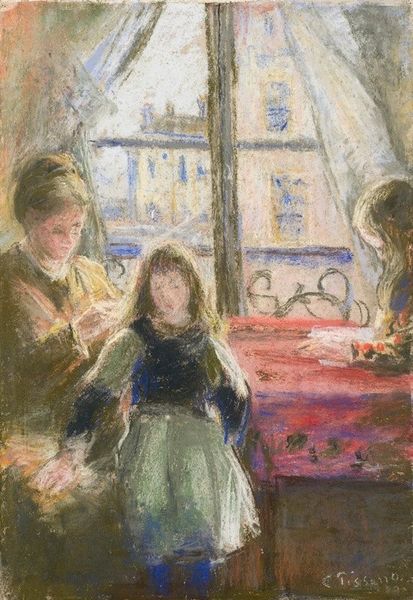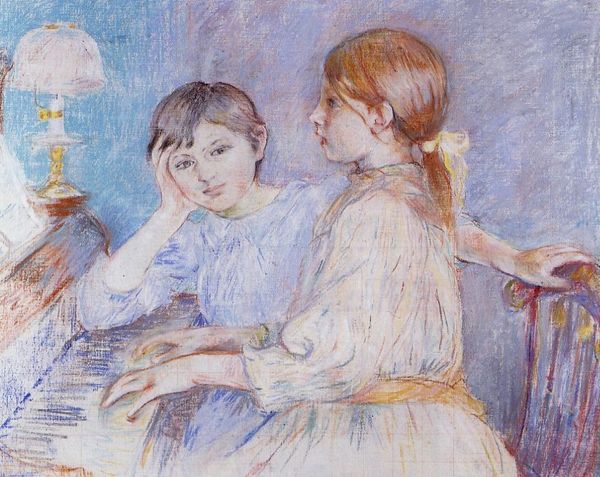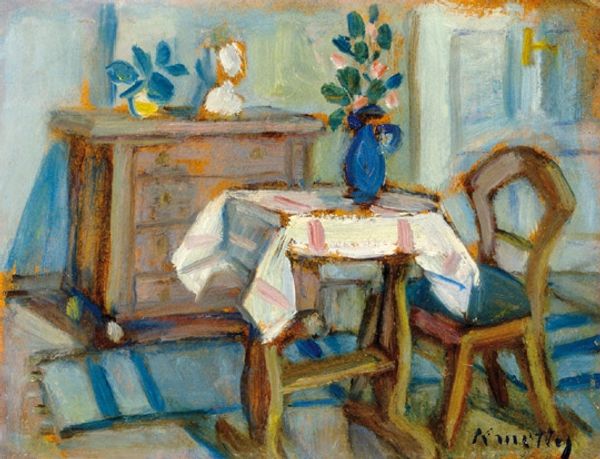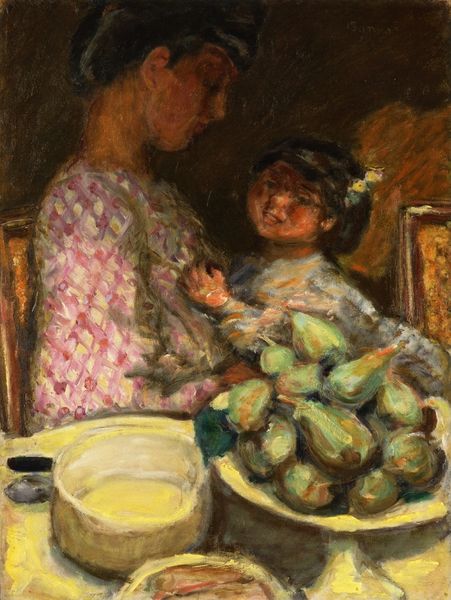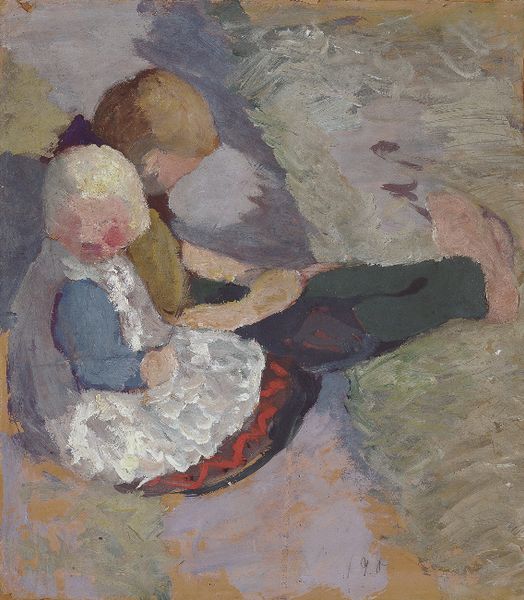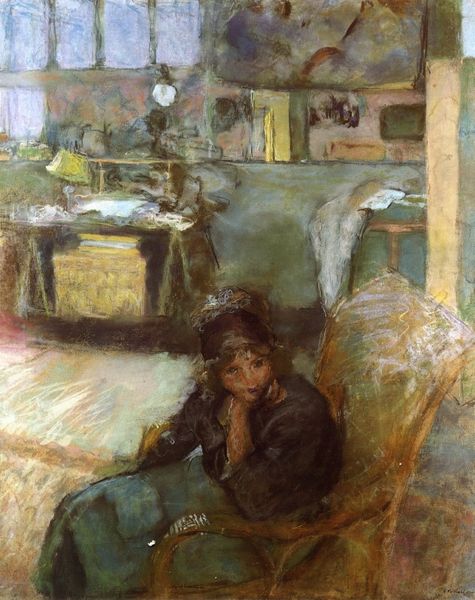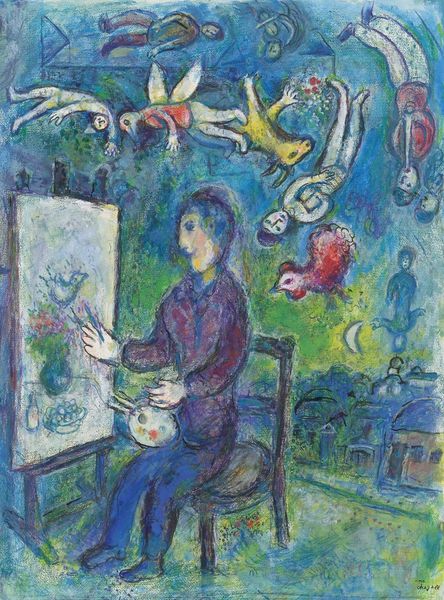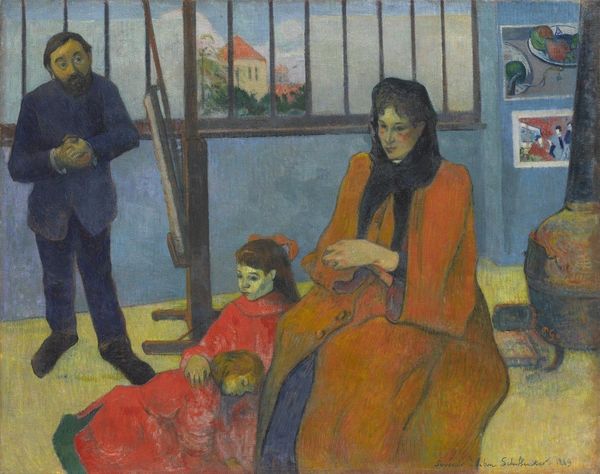
gouache, oil-paint, watercolor
#
portrait
#
gouache
#
figurative
#
impressionism
#
gouache
#
oil-paint
#
figuration
#
oil painting
#
watercolor
#
watercolour illustration
#
genre-painting
#
watercolor
Copyright: Public Domain: Artvee
Curator: Here we have Camille Pissarro's "The Children," created around 1880 using oil and gouache. What’s your initial reaction to it? Editor: It's quietly haunting, isn't it? A wistful sadness seems to cling to those blues and grays. Like a memory fading at the edges. Curator: Indeed. Pissarro was very interested in representing everyday life and the laboring classes, even within his family. Look at how the tools of labor, or perhaps education as a form of labor, are rendered almost abstractly upon the table. Editor: They're like hazy props in a dream! And notice how he paints the girls; one's gazing out the window, almost disconnected. The other is immersed in study, and the cool blues and greens wash over her as she learns. It feels incredibly intimate and yet somehow distanced too. Like a protective shielding. Curator: Exactly. Consider the materiality: oil and gouache allowed him to build up layers, creating depth while also capturing a sense of fleeting light. It is very representative of the Impressionistic style, but it also illustrates the reality for children in the lower and middle classes during this period and the family support involved. Editor: He definitely wasn’t fetishizing rural life as so many artists did at the time. There’s a grittiness to the texture, the palette… It’s romantic in its vulnerability but not saccharine, that’s the thing. It feels deeply observed, like we are flies on the wall watching his family’s daily grind. Curator: The social context is key here. Pissarro wasn't just painting a genre scene; he was documenting a specific social reality with attention to how social and cultural norms affect his children and their class. Editor: Absolutely, he elevates the ordinary, the overlooked labor of childhood in particular, by simply noticing the light, the color, the inherent drama in such a humble interior. I can almost hear the scratch of her pen. Curator: Thank you for shedding new light onto Pissarro’s material practice. It brings added dimensions to an artist whose social project has, perhaps, been overlooked. Editor: The pleasure was all mine. I am left just seeing so much quiet beauty in what others dismiss as merely quotidian.
Comments
No comments
Be the first to comment and join the conversation on the ultimate creative platform.
